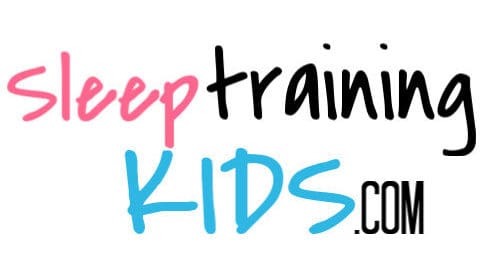While it’s nice to know what to expect for neurotypical children and sleep regression, are there any key differences to know when it comes to sleep regressions and children with autism? I’ve been asked this question enough times that I sat down to do some extensive research – of both the literature and by talking to autism experts and autism-aware bloggers.
Managing sleep regression and autism is far more involved than it is for neurotypical children, simply because there are far more underlying medical issues that may need to be addressed before lasting, noticeable, and sustainable improvement happens. Even so, it’s doable with a team approach.
Ready to see what the experts have to say? Keep reading for the complete guide to sleep regressions and autism.
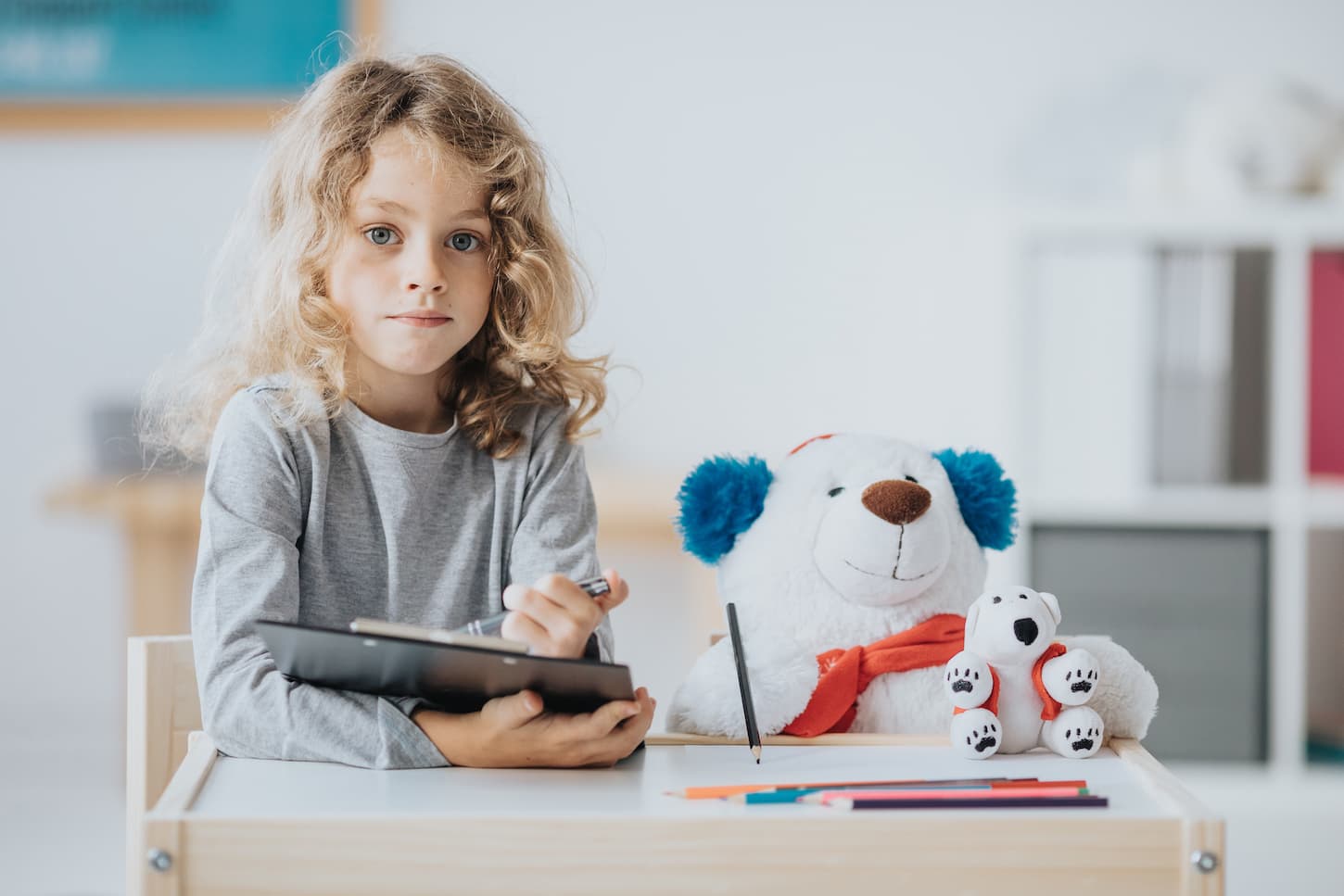
Can a Child with Autism Have Sleep Regressions?
Children with autism can have sleep disruptions and sleep regressions just like neurotypical children do. In fact, they may experience more problems (in quantity, duration, and/or severity) than neurotypical children do.
A 2008 study found that while about 25% of neurotypical children have sleep issues (like sleep onset delays, night wakings, or bedtime resistance), the actual prevalence of sleep problems in school-aged children with autism is much higher.
Here’s what the literature says exactly.
Children with ASD experience similar sleep problem types to those observed in typically developing children, although the existing literature suggests that the prevalence of sleep problems in autism is markedly higher than expected, occurring in 44–83% of school-age children.
2008 Study: Sleep Problems in Children with Autism Spectrum Disorders, Developmental Delays, and Typical Development referencing this 2001 book titled “Sleep Disturbance in Children and Adolescents with Disorders of Development: its Significance and Management” (the book is available here on Google Books).
The range of prevalence (44-83%) was determined by Australian psychologist Amanda Richdale in the 1990s and is based on parent reports. But before you wonder if it’s a valid number, know this: that range has since been verified by more objective methodology, including video recordings and sleep trackers.
Sleep problems are more than twice as common in young children with Autism Spectrum Disorder and Developmental Delays with Autism Spectrum Disorders.
2019 Study: Sleep Problems in 2- to 5-Year-Olds with Autism Spectrum Disorder and Other Developmental Delays (via the American Academy of Pediatrics website).
How Does Autism Affect Sleep?
The most common sleep issues for people with autism spectrum disorders are insomnia and delayed sleep onset. There are also frequent night wakings and apnea.
The experts say this increased prevalence of sleep problems may be due to one of these main reasons.
- Anxiety makes everything hard, including bedtime and sleep. Based on my research, there is a higher rate of general anxiety in children with ASD and a high percentage of diagnosed anxiety disorders.
- Different sensitivity to lights, sounds, and touch than neurotypical children. Some kids with ASD will under respond to sensory input. Others will have an increased reaction to sensory input. As many as 70-80% of children with ASD also have Sensory Processing Disorder (SPD). This different sensitivity to sensory input will impact bedtime and sleep.
- Children with autism may have a significantly lower level of naturally-occurring melatonin. As this hormone helps regulate our circadian rhythms (day-night cycles), this could explain why children with ASD have difficulty falling and staying asleep.
- Children with ASD have a harder time interpreting social cues. Not only does this make socialization harder, but it can make bedtime harder as children with autism may not relate bedtime rituals as a sign that it’s time to go to bed.
- There is a marked physical difference in sleep between neurotypical and children with autism. There is a higher prevalence of apnea and a change in natural REM sleep for people with ASD.
So let’s talk about some of the common sleep patterns seen in children with ASD.
Common Sleep Patterns in Kids with Autism
Children with ASD wake up frequently at night. They also have a harder time falling asleep and waking up on their own timeline.
This may be due to the higher prevalence of sleep apnea in people with autism and/or a difference in REM sleep in addition to general insomnia.
This pattern of frequent night wakings may take much longer to resolve in children with ASD than neurotypical children because of underlying medical concerns that are causing sleep apnea and REM sleep deviations.
Several research papers I’ve read referenced studies on the changes in REM sleep and how scientists have hoped that melatonin would prove to be the link to improving sleep in people who have autism. Those researchers found that people with autism have a lower level of the hormone and suggested that a melatonin supplement would be helpful for managing insomnia.
Of course, that research is now a decade or so old – but even so, studies are still in the early-ish phase and more conclusive results will take time.
Autism, Apnea, and Sleep Disturbances
Researchers have found that as many as 40% of children with autism may have apnea, as compared to either 1-6% or 25% of neurotypical children, depending on which study you want to reference. No matter which prevalence is right, though, that’s still a huge statistical deviation from the developmental norm. As such, apnea is a huge concern and issue for people with autism.
Not-so-fun fact about apnea: when our brains aren’t getting enough oxygen, our bodies wake up. We may only wake up enough to reassert control of our breathing (so our brains get more oxygen) and not realize we’re waking up. However, all of these micro-wake-ups leave a person exhausted.
As such, apnea is a huge sleep disturbance for anyone who is experiencing it, children with autism included. Apnea may be considered an underlying medical condition. As such, it may require intervention to see improvement.
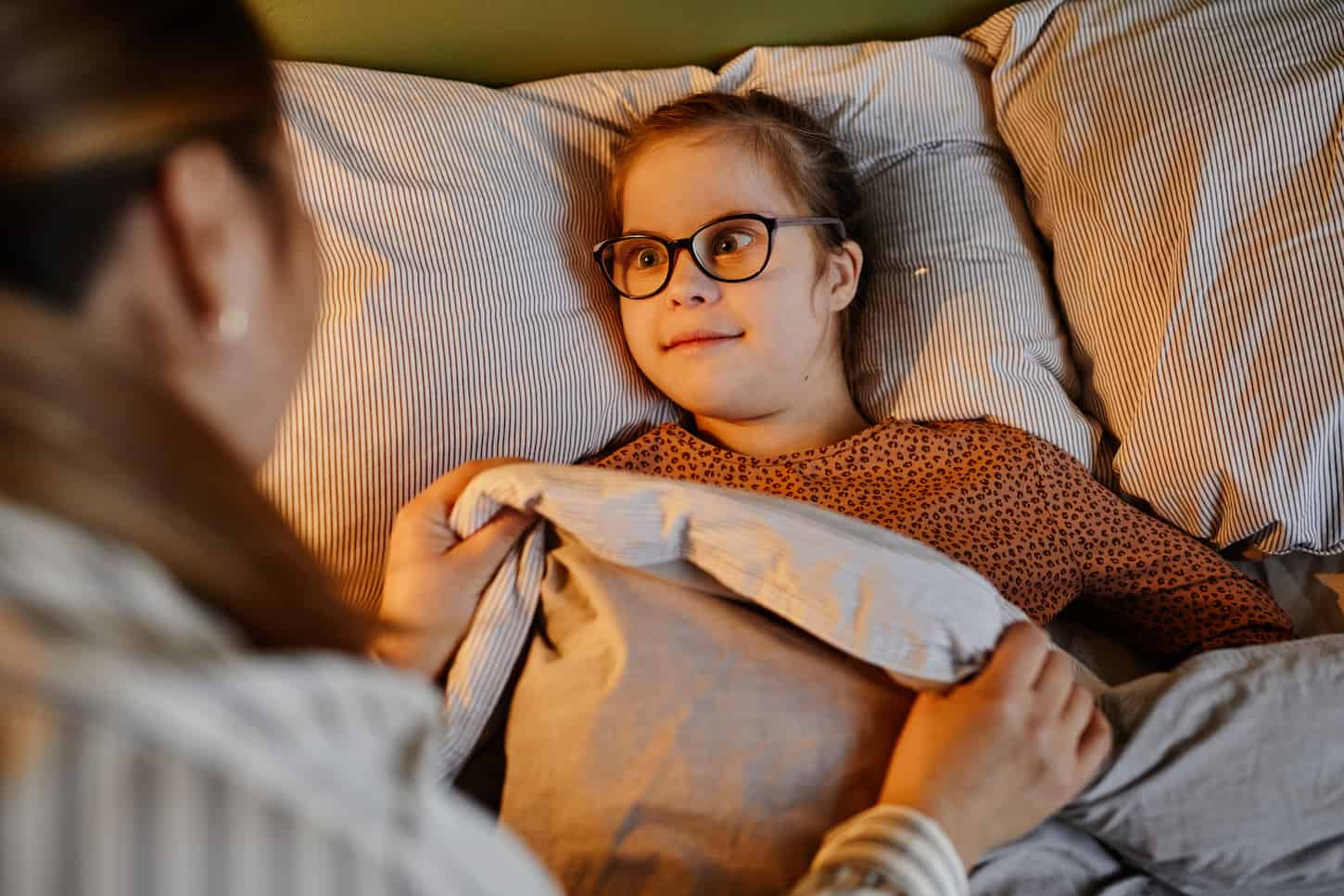
How REM Sleep Works in Autism
Several studies have also found that children with autism may experience less REM sleep (rapid eye movement). Because REM sleep is thought to be correlated with memory and learning, less dreaming in children with autism may correlate with poor retention, learning difficulties, and memory.
Here’s what one Stanford home sleep study found.
| Neurotypical Sleep Results | Autism Sleep Results | |
|---|---|---|
| Time to reach REM | 100 minutes | 160 minutes |
| Percent of time spent in REM | 22-25% | 14-15% |
| Melatonin production | Normal | Low |
| Melatonin breakdown (in the liver) | Normal | Slow (resulting in a “normal” overall melatonin level) |
More research is always forthcoming, which is great. Because more data will help to finetune these results and help children with autism get more sleep. Waiting, however, isn’t always fun.
How Sleep (and Sleep Regressions) Impacts Your Autistic Child
Sleep deprivation isn’t ideal (or even okay) for anyone. And sleep deprivation will have the same negative impact on anyone, whether they have autism or not.
Children with autism who have compromised sleep are at a greater risk for poor daytime behavior.
Richdale
Even so, here are some of the symptoms that an exhausted child with ASD may exhibit.
- Increased crankiness or irritability
- Increased hyperactivity
- Decreased attention
- Increased aggression
- Behavior issues
- Emotional problems
- Paradoxical sleeplessness (less able to fall asleep despite being exhausted)
- Increased classical difficulties of autism
- Changes in levels of excitability
- Increased repetitive behaviors
- Increased difficulty with social interactions
- Changes in ability to communicate (usually decreased)
These changes in behavior are known as autistic regression.
Our findings suggest that, even though no particular differences in sleep architecture were found between the two groups of children with autism, those who experienced regression showed more sleep disorders and a disruption of sleep either from a macro‐ or from a microstructural viewpoint.
2011 Study: Sleep in Children with Autism with and without Autistic Regression on US National Library of Medicine (or click here to access the full study available on Wiley Online Library)
And that’s just how it affects your child.
Odds are good that if your child is up at all hours of the night, so are you – which means you’re sleep-deprived, too. And that can impact not only your own life (and reactions) but also interpersonal relationships as everyone is trying to contain their crankiness. In other words, nobody acts or communicates their best when exhausted. And that includes us as parents and our parenting skills when we’re overtired.
How to Help Your Autistic Child Get Better Sleep with Fewer Sleep Disruptions
After extensive research, it appears that the best way to help your autistic child get better sleep (and have fewer sleep disruptions) is with something called “combination therapy.”
Combination therapy is a team effort that involves discovering any underlying medical or other concerns that could be contributing to the sleep difficulties and then addressing them – with both medical interventions and situationally appropriate therapies.
Common underlying medical concerns that may need to be addressed include:
- Apnea
- Epilepsy
- Low melatonin levels
- Leg cramps (or jumpy legs)
Other concerns that may need to be addressed include the temperature of the sleeping environment or sensory concerns with the feel of blankets.
Many of these issues can be discovered during an overnight sleep study, which is the first step in combination therapy.
As far as doing a polysomnography (sleep) study at home vs in a lab?
The research and studies I’ve found have said that the location doesn’t impact the quality of the data. In other words, testing at home will give the same correlational data as well as doing it at the lab – but it will probably be more cost-effective and less stressful for your child. Just be sure to talk to your doctor and sleep study team about your situation.
Once your team has those results in hand, they can talk with you about the best combination of options for your family. Options may include:
- Medical treatments
- Medications
- Behavioral therapies
- Changes to your routine to improve outcomes
- Other treatments (as needed)
Just keep in mind that your specific journey will be much different than the journey of others – and that it is a journey.
Some of the case studies I’ve read detailed the story of a little girl and her brother, both of whom have ASD.
- The little girl’s sleep study revealed too-large tonsils and adenoids. Once those were surgically removed, her sleep and behavior improved dramatically, while melatonin supplements did next to nothing to improve her sleep quality or behavior.
- The girl’s brother is suspected to have a different-than-normal circadian rhythm, meaning his sleep schedule is just different. His journey and combination therapy looked much different than did his sister’s. Changing his bedtime routine and using a melatonin supplement helped him.
Combination therapy isn’t fast or an immediate fix. It can take time to find the underlying concerns – and then more time to properly address them. It’ll then take time to try the interventions and evaluate how well they’re working – and then more time to tweak things as needed.
However, despite how long it takes, combination therapy is showing great promise and is getting results.
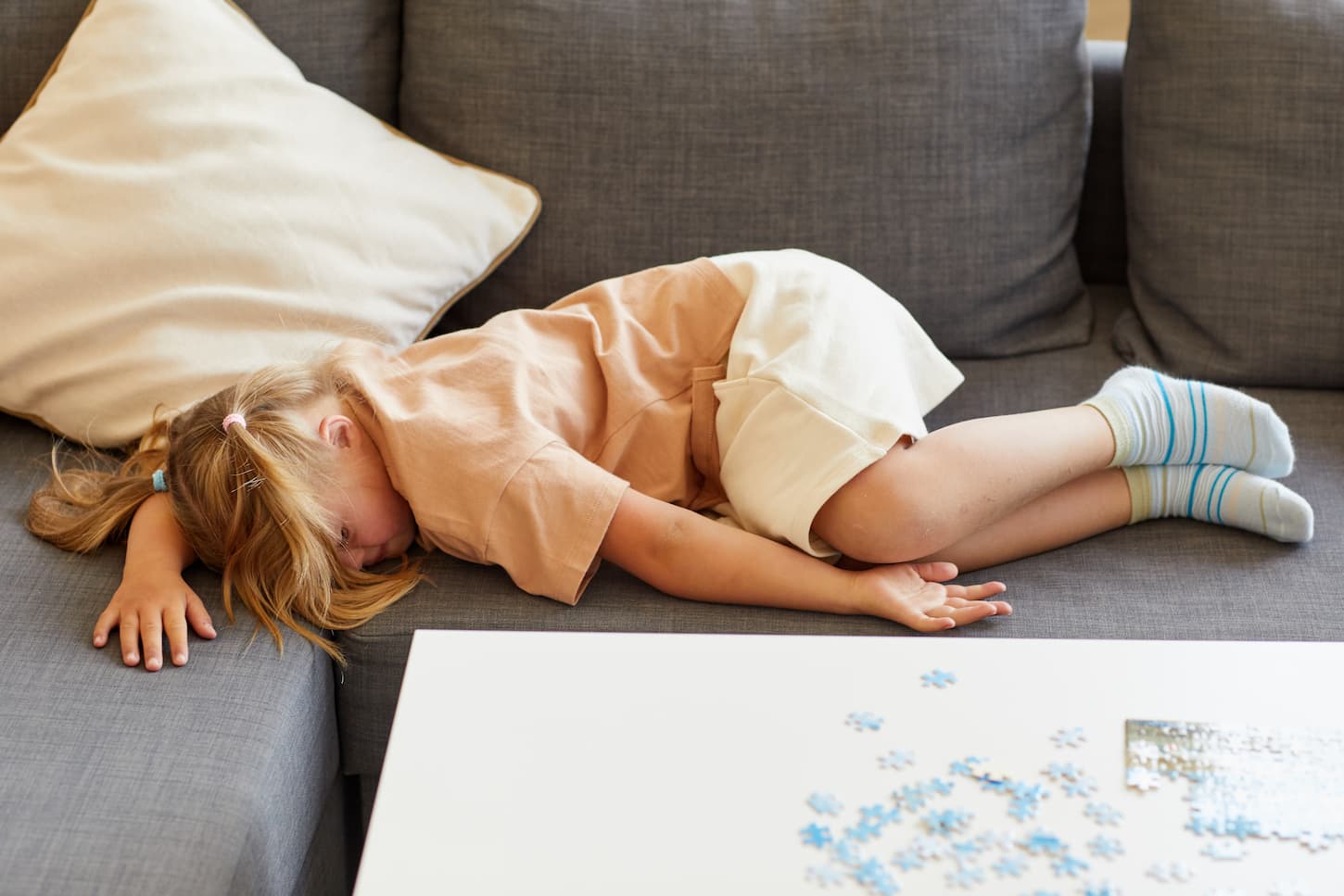
Managing Sleep Regressions with Autistic Children
When it comes to dealing with sleep regressions, the same principles that apply to neurotypical children also apply to autistic children. There are just a few additional recommendations.
First, prepare for success by creating a baseline. After all, you need a baseline or a status quo so you can make small changes to it – and by doing so, find ways to improve the whole situation.
Then, evaluate the status quo to find underlying triggers that make sleep harder or more difficult. It’s going to require time, experimentation, and some trial-and-error.
Once you find triggers that make sleep harder, eliminate them one by one. Keep a journal to see how eliminating triggers impacts sleep. If it has a positive impact, then know you’re on the right track. Keep eliminating triggers.
If eliminating a trigger doesn’t seem to matter, keep going. It may have been less of an issue than you previously thought. Or if eliminating something (like part of the bedtime routine) backfires, add it back in and test something else.
Here are some common sleep regression triggers (like time) that may need to be evaluated and/or tested for your autistic child.
| Common Triggers | Examples |
|---|---|
| Diet | Sugary foods, food coloring, caffeine ( especially if too close to bedtime) |
| Activities | TV too close to bedtime, not enough daytime exercise, roughhousing before bedtime |
| Bedtime Environment | The texture of bedding, white noise machine |
Once triggers have been addressed, the next step is to use an appropriate, behavior-based sleep training method to teach and enforce good sleep habits. Just know that practicing good sleep habits (and sleep training) will also take time to see results. However, the results will come.
Create an Autism-Friendly Sleep Environment for Your Child
All children may have slightly different preferences for sleep environments. That’s normal. My daughter dislikes wearing pajamas – but my boys love wearing cotton pajamas.
So as you’re creating your child’s ideal sleep environment, know that you’re on the right path.
Here are some other tips for creating an autism-friendly sleep environment that I’ve gotten from talking to parents of autistic children, including an amazing woman and blogger who talks about her experiences raising an autistic, nonverbal daughter.
- Use a calming sleep routine for your kids with autism.
- Use images to help your child see and understand the routine. Be sure to talk about it regularly together. Let your child point out the steps as they’re due to be implemented.
- Start dimming lights and turn off devices before bedtime as a nonverbal cue that bedtime is coming.
- Consider using some guided imagery or other relaxation techniques to get into a sleep-ready state.
- Some autistic kids do well with a doctor-recommended magnesium or melatonin supplement about 30 minutes before bedtime.
- Spray some lavender into the air or on an appropriate surface as a bedtime signal (some kids do well with it sprayed on bedding as long as there are no respiratory concerns). Lavender helps promote better sleep.
- Consider using a weighted blanket or vest or sleepwear if that will help your autistic child.
- Consider using a white noise machine – if it’s helpful.
- Use touch to help calm your child as needed.
- Would a silky blanket or special stuffed animal help? Use it.
- Consider a dim nightlight in the bedroom to reduce nighttime anxiety.
Just keep in mind that you may also need to adjust the actual bed or crib to help your autistic child sleep safely. Some kids may need reinforced cribs or beds. And other kids may have a prescription sleep medicine that needs to be taken each night.
The parents and experts I talked to also pointed out that for autistic kids with sensory issues, you may want to address clothing labels, blackout curtains, sound-proofing a bedroom, using earplugs, and smells, and removing distracting toys or decor.
Be Patient – Sleep Regressions are Difficult
Whether your child is autistic or neurotypical, sleep regressions are hard. So be patient with yourself and them during this difficult time.
In fact, make sure you’re taking 5-10 minutes for yourself (as needed and allowed by circumstances) to help yourself be centered. Practice some guided imagery, mindfulness, or other relaxation techniques to stay calm.
Staying calm is important because anxiety is contagious – in that our kids can sense it. And if we’re anxious about their sleep, they will be, too. Being calm and centered (rather than anxious and stressed) will help things progress faster.
Get Outside During the Day
Being active and getting enough sunshine is key to getting enough sleep. Not only do the activity and sunshine help us get enough vitamin D, but it also helps us regulate our natural sleep-wake cycles (circadian rhythms).
So get outside and be active. It’ll wear your child out and help everyone sleep better.
My kids’ pediatrician is fond of saying that there’s no such thing as “bad weather” – there’s just an inappropriate clothing choice. Then he reminds my kids to go outside and play – every single day.
Track Your Child’s Sleep Patterns and Sleep Regressions with a Journal
Having a sleep journal for your child is an amazing tool. It helps you track potential sleep regression triggers, potential problems, and what’s working.
So if you want to track your autistic child’s sleep, keep a sleep journal. It will come in handy when talking to your doctor, and your combination therapy team, and in helping to identify potential underlying medical concerns that need to be addressed before additional progress can be made.
Don’t make the same mistake I’ve made when I think I can remember something important (and then immediately forget it!). Go ahead and write it down – whether on paper or on a phone app. Just write it down.
Why Won’t My Autistic Child Sleep Alone?
Some autistic children experience sleep regressions and won’t sleep alone. Dealing with this may be harder than getting a neurotypical child to sleep in their own room. However, I’ve been assured by research and talking to parents of autistic children that it’s still very possible.
Here are some of the most common reasons why autistic children don’t want to sleep alone.
- Night terrors or nightmares.
- Enuresis or bedwetting
- Anxiety
- Restless sleep
- Medical issues or needing extra medical care during the night
- Snoring or apnea
- Separation anxiety
- FOMO (fear of missing out)
- And any other reason that a neurotypical child wouldn’t want to sleep – or sleep alone
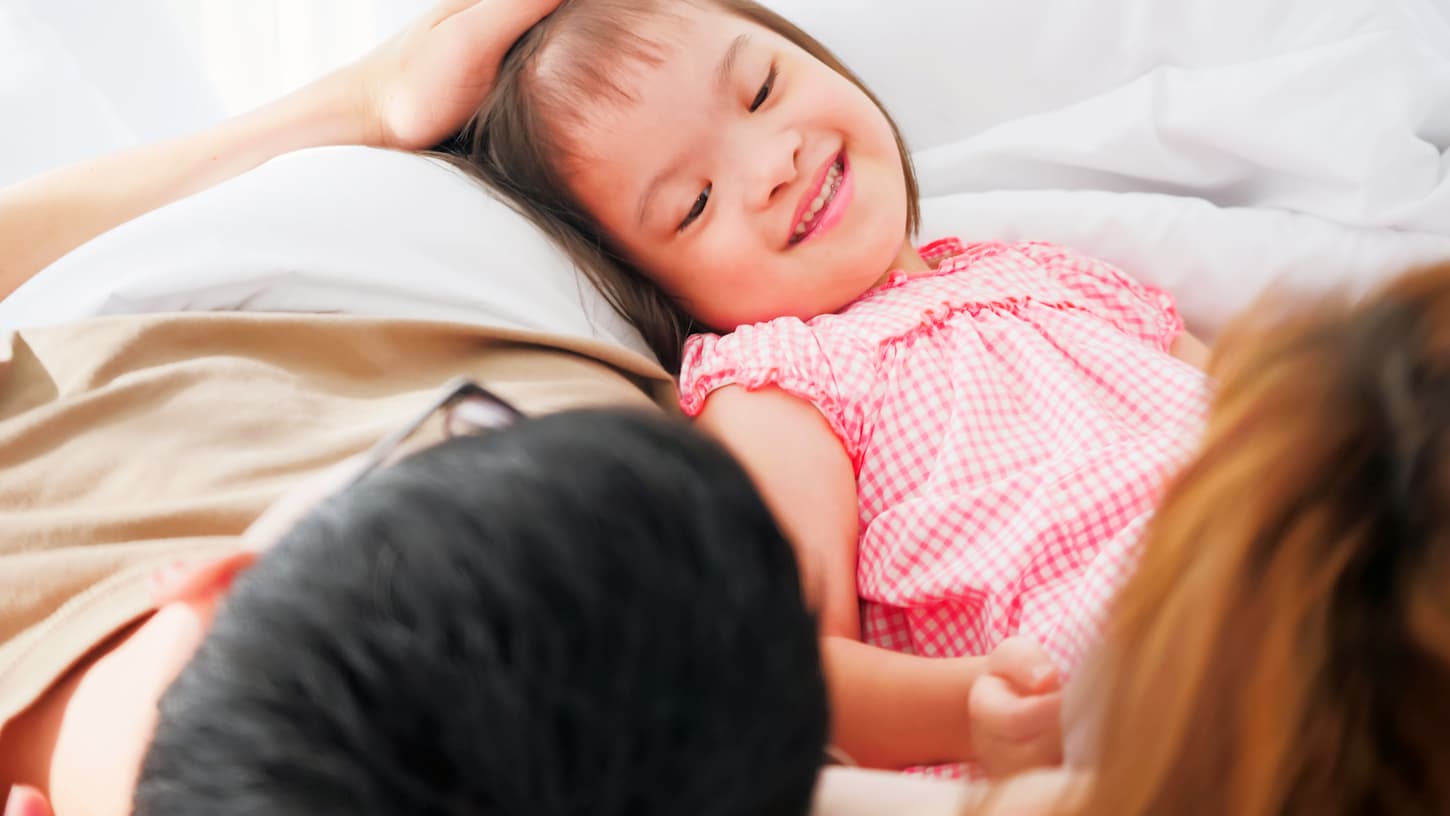
Tips to Get Your Autistic Child to Sleep in Their Own Bed
After talking to friends and others who are parents of children with ASD, the best way to get an autistic child to sleep in their bed comes down to one piece of advice. Ready? Here it is.
Getting an autistic child to sleep in their own bed takes TIME and consistent effort. In some cases, it takes a very long time. Use a gradual, behavior-based sleep training method to see change. Just expect it to take a lot of effort, patience, and practice before things change.
Of the parents I talked to, most recommended using a fading technique, like this fading technique.
However, each person has reassured me that getting an autistic child to sleep in their own bed is very possible. And they echo me in saying this – hang in there. You’ve got this. And good luck.
References, Sources, Citations, and Experts Interviewed
- American Academy of Pediatrics. (2010, May 3). Sleep disturbances are associated with behavior problems in children with autism. ScienceDaily. Retrieved November 1, 2019, from www.sciencedaily.com/releases/2010/05/100502080232.htm
- Autism Anxiety Overload. (n.d.). Retrieved from https://www.sensory-processing-disorder.com/autism-anxiety-overload.html.
- Genetic studies probe sleep hormone’s role in autism: Spectrum: Autism Research News. (2011, November 13). Retrieved from https://www.spectrumnews.org/news/genetic-studies-probe-sleep-hormones-role-in-autism/.
- Giannotti, F., Cortesi, F., Cerquiglini, A., Vagnoni, C., & Valente, D. (2010). Sleep in children with autism with and without autistic regression. Journal of Sleep Research, 20(2), 338–347. doi: 10.1111/j.1365-2869.2010.00882.x (via NCBI)
- Goldman, S. E., Adkins, K. W., Calcutt, M. W., Carter, M. D., Goodpaster, R. L., Wang, L., … Malow, B. A. (2014). Melatonin in Children with Autism Spectrum Disorders: Endogenous and Pharmacokinetic Profiles in Relation to Sleep. Journal of Autism and Developmental Disorders, 44(10), 2525–2535. doi: 10.1007/s10803-014-2123-9 (via NCBI)
- Johnson, N. (2019, September 28). ADHD and Sleep. Retrieved from https://www.babysleepsite.com/toddlers/adhd-sleep-story/.
- Johnson, N. (2019, June 18). Sleep Problems and Depression, Even in Children. Retrieved from https://www.babysleepsite.com/sleep-news/sleep-problems-depression/.
- Kori of Kori at Home, an autism-awareness, parenting support blogger, and mom to a nonverbal child with autism. She offers an amazing collection of resources (including a new diagnosis toolkit, autism parenting packet, and visual schedule pages) to her newsletter subscribers. Click here to see her site and those resources.
- Malow, B. A., Mcgrew, S. G., Harvey, M., Henderson, L. M., & Stone, W. L. (2006). Impact of Treating Sleep Apnea in a Child With Autism Spectrum Disorder. Pediatric Neurology, 34(4), 325–328. DOI: 10.1016/j.pediatrneurol.2005.08.021 (via NCBI)
- Malow, B. A., Adkins, K. W., Reynolds, A., Weiss, S. K., Loh, A., Fawkes, D., … Clemons, T. (2013). Parent-Based Sleep Education for Children with Autism Spectrum Disorders. Journal of Autism and Developmental Disorders, 44(1), 216–228. doi: 10.1007/s10803-013-1866-z (via NCBI)
- Krakowiak, P., Goodlin-Jones, B., Hertz-Picciotto, I., Croen, L. A., & Hansen, R. L. (2008, June). Sleep problems in children with autism spectrum disorders, developmental delays, and typical development: a population-based study. Retrieved from https://www.ncbi.nlm.nih.gov/pmc/articles/PMC4041696/.
- REM sleep disrupted in children with autism: Spectrum: Autism Research News. (2011, February 3). Retrieved from https://www.spectrumnews.org/news/rem-sleep-disrupted-in-children-with-autism/.
- Reynolds, A. M., Soke, G. N., Sabourin, K. R., Hepburn, S., Katz, T., Wiggins, L. D., … Levy, S. E. (2019). Sleep Problems in 2- to 5-Year-Olds With Autism Spectrum Disorder and Other Developmental Delays. Pediatrics, 143(3). DOI: 10.1542/peds.2018-0492 (available online here)
- Ross-Jones, D. (2012, March 18). Sleep Deprivation and OUR Mental Health. Retrieved from https://autismdaybyday.blogspot.com/2012/03/sleep-deprivation-and-our-mental-health.html.
- Sleep on it: Spectrum: Autism Research News. (2009, April 24). Retrieved from https://www.spectrumnews.org/opinion/sleep-on-it/.
- Stores, G. (2001). Sleep disturbance in children and adolescents with disorders of development: its significance and management. (Available via Google books here)
- Veatch, O. J., Pendergast, J. S., Allen, M. J., Leu, R. M., Johnson, C. H., Elsea, S. H., & Malow, B. A. (2014). Genetic Variation in Melatonin Pathway Enzymes in Children with Autism Spectrum Disorder and Comorbid Sleep Onset Delay. Journal of Autism and Developmental Disorders, 45(1), 100–110. doi: 10.1007/s10803-014-2197-4 (via NCBI)
- Wide awake: Why children with autism struggle with sleep: Spectrum: Autism Research News. (2019, July 30). Retrieved from https://www.spectrumnews.org/features/deep-dive/wide-awake-why-children-with-autism-struggle-with-sleep/.
